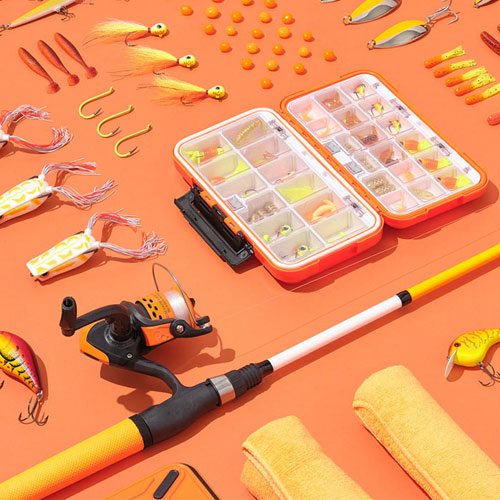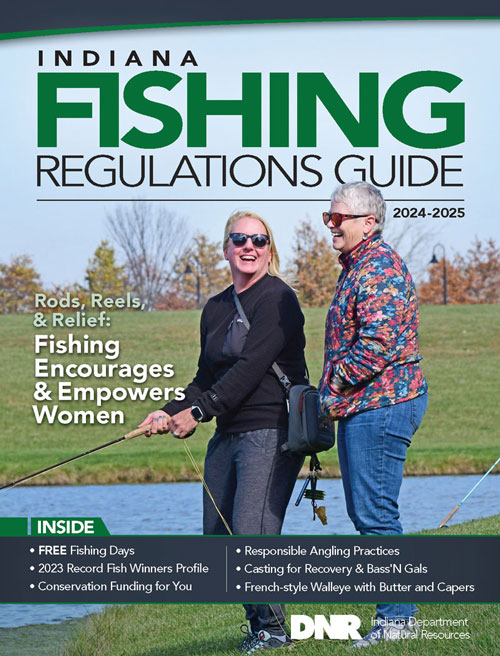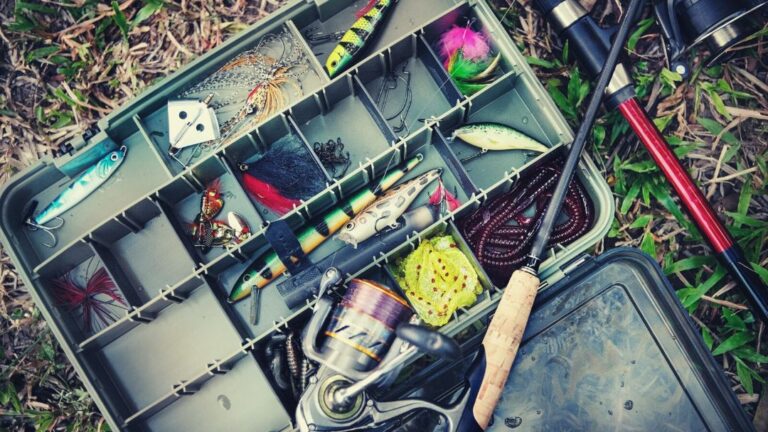Tips to Know How to Choose Fishing Tackle: Expert Guide
Fishing is a relaxing and rewarding activity. The right tackle can make all the difference.
Choosing the right fishing tackle might seem overwhelming. There are so many options out there. But don’t worry. With a few simple tips, you can find the best gear for your needs. Whether you’re a beginner or an experienced angler, the right equipment can enhance your fishing experience.
This guide will provide you with key tips to help you choose the perfect tackle. From rods and reels to lures and lines, learn how to select gear that suits your style and the type of fish you aim to catch. Get ready to improve your fishing game with the right tools in hand.
Choosing The Right Rod
Picking the right rod is key to a good fishing experience. A well-chosen rod improves your catch rate and makes fishing more enjoyable. Understanding the different rod types and materials can help you make an informed decision.
Rod Types
Rods come in various types. Each has its unique features. Spinning rods are user-friendly and versatile. They work well for beginners. Casting rods are ideal for precision and control. Fly rods are best for fly fishing. They offer delicate presentations. Ice rods are short and designed for ice fishing. Choose the rod type based on your fishing style and target species.
Material Considerations
Rod materials impact performance and durability. Graphite rods are lightweight and sensitive. They are great for detecting subtle bites. Fiberglass rods are flexible and durable. They handle rough conditions well. Composite rods combine graphite and fiberglass. They offer a balance of sensitivity and strength. Consider the material that suits your fishing conditions and preferences.

Credit: www.takemefishing.org
Selecting Reels
Choosing the right fishing tackle can be overwhelming, especially for beginners. The type of reel you select plays a crucial role in your fishing experience. This section will guide you on how to choose between different types of fishing reels.
Spinning Reels
Spinning reels are popular among both beginners and experienced anglers. They are known for their ease of use and versatility. Here are some key features:
- Open-faced design: Easy to cast and control.
- Versatility: Suitable for various fishing techniques and fish species.
- Anti-reverse mechanism: Prevents the handle from spinning backward, providing better control.
- Drag system: Allows you to adjust the resistance level when a fish pulls on the line.
Pros:
- Easy to use
- Less prone to tangles
- Great for light tackle
Cons:
- Not ideal for heavy lines
- Can be less accurate for long-distance casting
Baitcasting Reels
Baitcasting reels offer more precision and control, making them a favorite among experienced anglers. Here are some features to look for:
- Closed-face design: Offers better line control.
- High gear ratio: Provides faster retrieval speed.
- Adjustable spool tension: Helps to reduce backlash and improve casting distance.
- Drag system: Enables adjustment of line resistance during a fish fight.
Pros:
- Excellent for heavy lines and big fish
- High accuracy in casting
- Better control over the lure
Cons:
- Steeper learning curve
- More prone to backlash
- Requires frequent adjustments
Understanding Fishing Lines
Understanding fishing lines is crucial for any angler. The right line can make a big difference in your fishing success. Fishing lines come in various types, each with its own strengths and weaknesses. Knowing the differences will help you choose the right one for your needs. Let’s dive into the two main types of fishing lines: monofilament and braided lines.
Monofilament Lines
Monofilament lines are very popular among anglers. These lines are made from a single strand of nylon. They are known for their flexibility and stretch. This makes them easier to handle and cast. Monofilament lines are also less visible in water. This is great for catching skittish fish.
These lines are affordable, making them a good choice for beginners. They work well in a variety of fishing situations. But, monofilament lines do have some downsides. They tend to absorb water, which can weaken them over time. Also, they can degrade when exposed to sunlight for long periods.
Braided Lines
Braided lines are another common choice for anglers. These lines are made from several strands of synthetic material. They are known for their strength and durability. Braided lines have little to no stretch, which means they offer great sensitivity. You can feel even the smallest nibble on your bait.
Braided lines are also very thin, which allows for longer casts. They are ideal for fishing in heavy cover, like weeds or around structures. But, these lines are more visible in water. Fish might notice them and be scared away. They can also be more expensive than monofilament lines.

Credit: www.amazon.com
Picking The Best Hooks
Picking the right fishing hook can make all the difference in your catch. Hooks come in different sizes and shapes. Each serves a unique purpose. Understanding these aspects helps you make the best choice. Let’s break down the essentials.
Hook Sizes
Hook sizes vary from very small to very large. The size you need depends on the fish you aim to catch. Small hooks work well for small fish. Large hooks suit bigger fish. Sizes range from #32 (smallest) to 19/0 (largest). Remember, larger numbers mean smaller hooks. When choosing, consider the fish species and the bait size.
Hook Shapes
Hooks also come in many shapes. Some common ones include J-hooks, circle hooks, and treble hooks. J-hooks are the most traditional. They work for many fishing styles. Circle hooks reduce the chance of gut-hooking fish. They are best for catch-and-release fishing. Treble hooks have three points. They are great for lures and live bait.
Each shape serves a different purpose. Understanding these shapes helps you fish more effectively. Choose the shape that fits your fishing method. This ensures you have a better chance of landing your catch. Happy fishing!
Choosing Lures And Baits
Choosing the right lures and baits is crucial for a successful fishing trip. The type of lure or bait can make a big difference in attracting fish. Let’s explore the different options available for fishing enthusiasts.
Artificial Lures
Artificial lures are designed to mimic the appearance and movement of real prey. They come in various shapes, sizes, and colors. Here are some common types:
- Spinnerbaits: These have spinning blades that create vibrations in the water.
- Crankbaits: These mimic small fish and are great for deep waters.
- Soft Plastics: These flexible lures resemble worms, grubs, or other creatures.
- Jigs: These have weighted heads and are ideal for bottom fishing.
Each type of artificial lure serves a specific purpose. It is essential to match the lure to the type of fish you are targeting.
Live Baits
Live baits are actual living creatures used to attract fish. They are highly effective because they look and smell like natural prey. Common live baits include:
- Worms: Nightcrawlers and red worms are popular choices.
- Minnows: Small fish used to catch larger predator fish.
- Crickets: Great for freshwater fishing, especially for panfish.
- Leeches: Effective for catching walleye and bass.
Live baits require proper storage to keep them alive and fresh. Make sure to handle them gently to avoid injury.
Understanding the different types of lures and baits helps in making better choices. It increases the chances of a successful catch. Try different options to see what works best in your fishing environment.

Credit: www.youtube.com
Considering Tackle Boxes
Choosing the right fishing tackle box is crucial for an enjoyable fishing trip. A well-organized tackle box saves time and keeps gear safe. This section provides essential tips to help you pick the best tackle box for your needs.
Storage Options
When selecting a tackle box, consider the storage options available. Different types of tackle boxes offer various storage features. Here are some common types:
- Hard Tackle Boxes: Durable and often have multiple compartments.
- Soft Tackle Bags: Lightweight and flexible, with adjustable dividers.
- Tackle Backpacks: Offer hands-free transport and multiple pockets.
Each type has its own advantages. Consider your fishing style and the amount of gear you need to carry. Hard tackle boxes are great for organizing small items, while tackle backpacks are ideal for mobile anglers.
Organizational Tips
Keeping your tackle box organized ensures you can find what you need quickly. Here are some organizational tips:
- Use dividers to separate different types of tackle.
- Label each compartment for easy identification.
- Store frequently used items in easily accessible areas.
- Group similar items together, such as hooks, weights, and lures.
- Keep a small notebook to track your inventory and note successful gear.
An organized tackle box can make your fishing experience much more enjoyable. Spend a few minutes each trip maintaining your box. This effort will save you time and frustration on the water.
| Type | Advantages | Disadvantages |
|---|---|---|
| Hard Tackle Boxes | Durable, multiple compartments | Bulky, heavy |
| Soft Tackle Bags | Lightweight, flexible | Less protection for delicate items |
| Tackle Backpacks | Hands-free, multiple pockets | May lack specialized compartments |
Additional Accessories
When selecting fishing tackle, additional accessories are often overlooked. These items can greatly improve your fishing success. Let’s explore two key accessories: sinkers and weights, and swivels and snaps.
Sinkers And Weights
Sinkers and weights are essential for controlling your bait’s depth. They help your bait reach the desired level in the water. Different types of sinkers include:
- Split shot: Small and easy to attach.
- Egg sinkers: Allow the line to slide through.
- Pyramid sinkers: Great for strong currents.
Choosing the right sinker depends on the fishing environment and target species. For example, use pyramid sinkers in fast-moving waters. This will keep your bait steady.
Swivels And Snaps
Swivels prevent your line from twisting. This is important when using spinning lures or live bait. There are several types of swivels:
- Barrel swivels: Common and versatile.
- Ball-bearing swivels: Best for heavy-duty fishing.
Snaps allow quick changes of lures or rigs. This saves time and increases your chances of catching fish. Consider these types of snaps:
- Snap swivels: Combine the benefits of snaps and swivels.
- Interlock snaps: Secure and reliable.
Using the right swivels and snaps will make your fishing experience more efficient. Always carry a variety of these accessories in your tackle box.
Seasonal Tackle Choices
Choosing the right fishing tackle can make or break your fishing experience. Seasonal changes affect fish behavior and their feeding patterns. Selecting the appropriate tackle for each season is crucial.
Summer Fishing Gear
Summer is a great time for fishing, but it comes with its own challenges. Fish are more active and can be found in warmer, shallow waters. Here are some tips for choosing your tackle in the summer:
- Lures: Use bright-colored lures like yellow, green, or orange. These colors attract fish in clear, sunny water.
- Lines: Lightweight lines work best in summer. They allow for more natural bait movement.
- Rods: Choose a medium-action rod for versatility. It can handle a variety of fish sizes.
- Bait: Live bait like worms or minnows is effective. Fish are more likely to bite in warmer water.
Winter Fishing Gear
Winter fishing requires different equipment. Fish are less active and often stay in deeper, colder waters. Here are some tips for winter tackle choices:
- Lures: Use darker-colored lures like black, brown, or dark green. These colors are more visible in murky, cold water.
- Lines: Heavier lines are better in winter. Fish are less likely to notice them in the colder, deeper water.
- Rods: A heavy-action rod is ideal. It helps in handling larger fish that may be sluggish but still powerful.
- Bait: Use slow-moving bait like jigs or spoons. Fish are less aggressive in cold water, so slow movements are key.
Frequently Asked Questions
What Is Fishing Tackle?
Fishing tackle refers to the equipment used by anglers. This includes rods, reels, hooks, lines, baits, and lures.
How To Choose The Right Fishing Rod?
Choose a fishing rod based on your target fish species. Consider factors like length, material, and action.
What Are The Types Of Fishing Reels?
There are three main types: spinning reels, baitcasting reels, and spincast reels. Each has specific uses.
How Important Is The Fishing Line?
The fishing line is crucial for success. Choose based on strength, stretch, and visibility for better results.
Conclusion
Choosing the right fishing tackle makes a big difference. Understand your needs and the type of fish you want to catch. Match your tackle to your fishing environment. Always consider quality and durability. Don’t forget to check customer reviews. Happy fishing!



